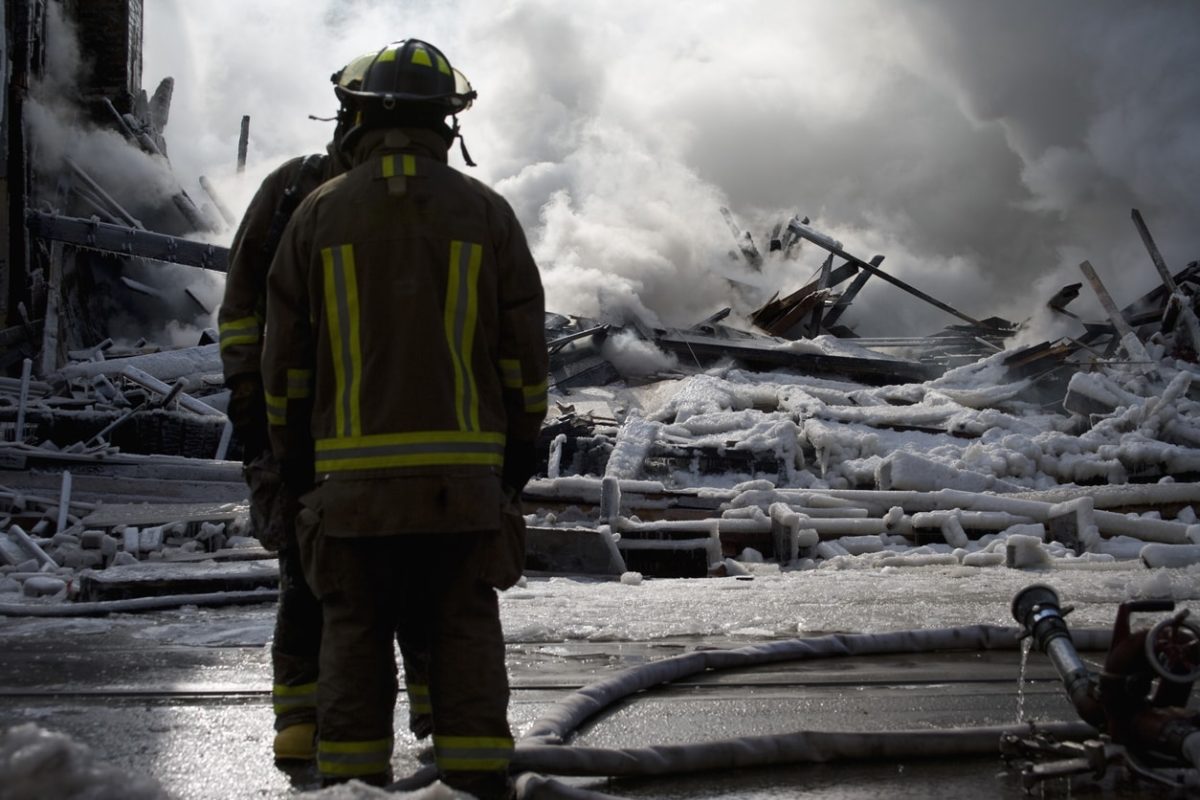
When most people think of fires, they think about the hot, dry weather that most states get during the summertime. However, winter brings a unique set of risks and challenges for firefighters ranging from mild inconvenience to extreme danger.
Serious fires are more likely to occur during periods of severe cold often resulting from the continual use of heating systems and temporary heat sources. The colder it gets, problems and risk factors faced on the fireground increase exponentially.
Winter Challenges
Firefighters typically need protection from both heat and cold at the same incident. They’re exposed to the cold while responding and setting up, and then they may encounter extreme heat while fighting fire. When they leave the fire environment for rehab, they must deal with the cold again. Multiple cycles of hot and cold make breathing apparatus issues likely, as well as rapid fatigue.
The protective clothing to keep from getting burned will only keep first responders warm for a few minutes. Adding layers of clothing to provide extra insulation from the cold adds weight and bulk, restricting mobility and requiring additional physical effort to perform simple tasks. Firefighters who are dressed for the cold are likely to become fatigued. It’s common for a firefighter to be drenched in sweat on the inside and covered with ice on the outside.
The Risks
Insulating layers incorporated into structural firefighting ensembles should be equally effective at keeping the user warm in a cold environment; however the equipment provides only limited insulation from severe cold.
Firefighters may spend hours exposed to extreme cold. There is a narrow body temperature range in which a firefighter can work safely and efficiently inside their protective gear. If internal body temperature deviates more than a few degrees from normal up or down physiological processes become dangerously unbalanced. The predictable results include fatigue, heat stress, burns, hypothermia, frostbite and exhaustion.
The extra weight and bulk makes problems greater when engaging in interior fire suppression. The firefighter who dressed to stay warm outdoors is likely to be at risk of heat stress inside a building because of extra warmth and weight. When the overheated firefighter goes outside to change air cylinders the situation reverses almost instantly from hyperthermia to potential hypothermia. Wet skin and perspiration-soaked inner layers of clothing create an even greater risk from exposure to extreme cold.
Precautions
Some synthetic materials used in modern thermal underwear are extremely effective in maintaining body temperature but shouldn’t be worn in situations where exposure to high temperatures is a risk. Natural fibers and thermally stable blends may generally be worn in contact with the skin.
Fire chiefs must ensure that special preparations are initiated for predicted periods of unusual cold; beginning with ensuring each firefighter is dressed to stay as warm as possible without compromising protection.
Work cycles for firefighters must be shortened in proportion to the temperature and exacerbating considerations. If prolonged operations are required, additional personnel should be summoned to replace members who’ve been exposed to extreme cold particularly if they’re wet. Plan and prepare for the inevitable when fighting fires during these winter months, and make sure that your operation is thoroughly protected with an Emergency Services insurance program.
About Provident Insurance Programs
With roots dating back to 1902, Provident Insurance Programs is an insurance agency that serves paid and volunteer firefighters in addition to emergency medical responders with numerous custom-tailored insurance programs. We’ve also extended our expertise and experience to offer benefit plans and coverages to participant groups as well as Transportation Benefits. We are committed to continuing to provide superior customer service, and would be happy to speak with you to provide further information. Give us a call today at (412) 963-1200 to speak with one of our representatives.


